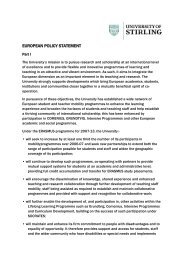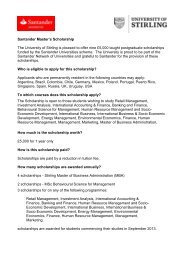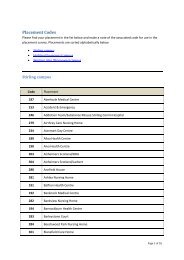Supporting a uK SucceSS Story: The impacT of - Research Councils ...
Supporting a uK SucceSS Story: The impacT of - Research Councils ...
Supporting a uK SucceSS Story: The impacT of - Research Councils ...
You also want an ePaper? Increase the reach of your titles
YUMPU automatically turns print PDFs into web optimized ePapers that Google loves.
DESIGN<br />
Design is an essential part <strong>of</strong> the equipment<br />
used by athletes. This can include a car, boat<br />
or bobsleigh as well as a shoe, ball, javelin<br />
or swimsuit. If you look back in history the<br />
design <strong>of</strong> sporting equipment has changed<br />
dramatically to help improve performance<br />
and limit the amount <strong>of</strong> physical stress on<br />
an athlete’s body. <strong>The</strong> formula one car is<br />
an example as well as the more humble<br />
tennis racket. Design works in parallel with<br />
technology to help give athletes that split<br />
second or millimetre advantage over their<br />
competitor and in an age when the margins<br />
for success are getting smaller, this is more<br />
important than ever.<br />
Shoes and suits<br />
“Swimming is<br />
a multi-billion<br />
pound industry,<br />
ranging from<br />
elite performance<br />
products to a<br />
lifestyle market<br />
that includes<br />
anything you<br />
would wear in or<br />
around water.”<br />
In 2006 Prior Level 2 (P2L), an interdisciplinary design<br />
partnerships between staff at London College <strong>of</strong> Fashion,<br />
Loughborough University Rapid Manufacture <strong>Research</strong> Group<br />
and EOS GmbH Electro Optical Systems, launched the world’s<br />
first bespoke performance football boot ‘assassin’. Each boot is<br />
sculpted to the individual’s foot and the outsole is designed upon<br />
the individual’s foot dimensions and unique walking/running style.<br />
<strong>The</strong> upper can be manipulated using sophisticated technology<br />
to adapt colour, appearance and function to the athlete’s needs.<br />
P2L’s system utilises a biomechanically optimised outsole (the<br />
base <strong>of</strong> the boot) that supports, controls and conserves the<br />
player’s musculoskeletal system. Individually positioned studs<br />
based on the athlete’s foot structure minimise peak forces on<br />
the foot whilst walking, running and sprinting. P2L develops<br />
relationships with players on an individual basis to help reduce<br />
injuries, improve comfort and performance over their entire career.<br />
<strong>Research</strong>ers at Birmingham City University are also concerned<br />
with the design <strong>of</strong> athlete’s shoes, but in contrast to the design at<br />
P2L, they are looking into the aerodynamics <strong>of</strong> the running shoe.<br />
<strong>The</strong> researchers are interested in both the upper shoe design<br />
and the overall composition <strong>of</strong> the frontal aspects <strong>of</strong> the shoe.<br />
Previous research suggested that the orientation <strong>of</strong> the foot in a<br />
middle or long distance running has an important effect on drag<br />
and may have an impact on the energy consumption <strong>of</strong> long<br />
distance runners. This new research aims to discover if this is the<br />
case and how design <strong>of</strong> a shoe to make it more aerodynamic can<br />
aid a runner’s performance.<br />
38<br />
SECTION THREE : DESIGN
















